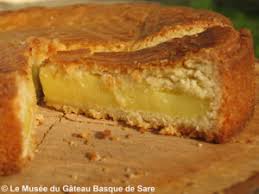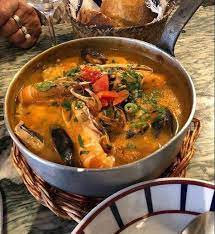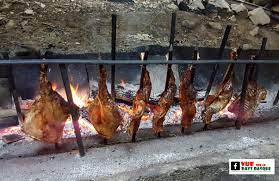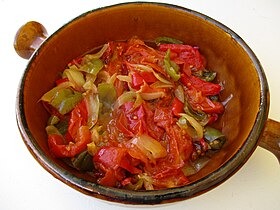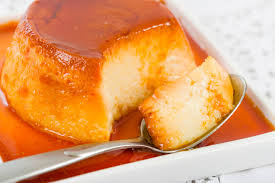The Basque Country of traditions, stories, legends and culinary innovation.
Chocolate and the Basque Country ...
Historical
The Inquisition torments the world by its "witch hunt". 1670 , is the date of the first mention of chocolate in Bayonne. It is the specialty of the Portuguese Marranes Jews who are refugee in the Basque Country . Chased from Spain, then from Portugal, they land in Bordeaux, which they are again forced to leave. Some choose to settle in Bayonne . From 1615 , they set up the first transformation workshops for cocoa beans. They will then help develop and enrich the city around know-how. They are the only holders of this secret: the manufacture of chocolate drink made from cinnamon, vanilla, pepper, cloves ... What good products, of which they marketed with Amsterdam .
Following the selection of cocoa beans, and the manufacturing steps, they transmit the art of an exceptional drink. Building pressure and prohibitions to trade, they are dismissed in the Holy Spirit district . They are even excluded from the Chocolatiers Guild, created in 1761 . They will find their rights on the eve of the French Revolution.
From the 18th century at the beginning of the 21st century
Bayonne becomes the City of Chocolate in France , for its quality of production and the dynamics that surround it. One of these manufacturers, Jean Fagalde installed in Cambo in 1787 , thus became the first industrial chocolate manufacturer. Participating in the Universal Exhibition of 1855, Maison Fagalde won the title of "supplier of His Majesty the Emperor of the French" . Dozens of craftsmen employ hundreds of workers, who will be faced with the arrival of mechanization. Basque craftsmen are unable to deal with industrialization. Large brands will absorb them. In Cambo-les-Bains, the Noblia house was the last to transform the bean, before its closure in 2001. The Chocolate Academy tells this long history, from its distant origins to its appearance in the Basque Country.
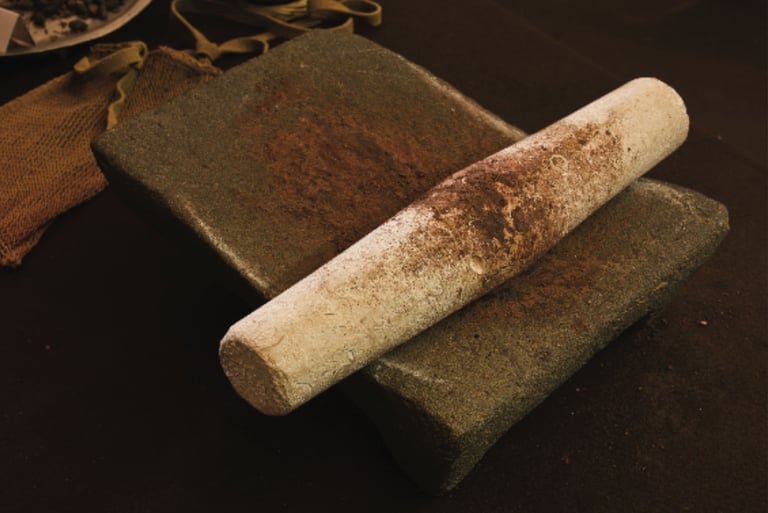

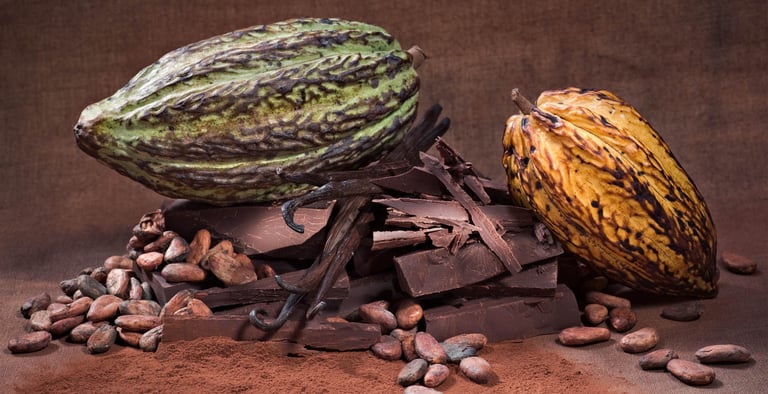

Bayonnais hot chocolate recipe
Ingredients for 4 pers
1l of whole milk see cut with mineral water for 1/4
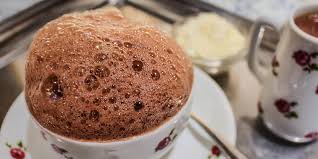

Rice Pudding :
A Culinary Heritage .
Rice pudding is a universal dessert that crosses borders with simple elegance. In the Basque Country, this sweet treat takes on a special dimension, forging links between France and Spain, particularly with Bilbao and the region of Biscay (Bizkaia).
In French gastronomy, many are unaware that some of the most delicious rice pudding recipes have their roots on the other side of the Pyrenees. This culinary connection with Bilbao and Biscay is a testament to the constant exchanges between the French and Spanish Basque communities, united by a culture that transcends borders.
The "tarta de arroz" from Barakaldo , in the industrial suburbs of Bilbao, represents one of the most emblematic expressions of this tradition. This rice pudding, more substantial than its French cousin, is distinguished by its creamy texture and slight caramelization on the surface. French Basque families have often adapted these recipes, integrating them into their own culinary heritage.
What makes Basque rice pudding so special is the quality of the milk used, often from sheep in mountainous regions, flavored with cinnamon and citrus zest. Some add a touch of rum or brandy, a nod to Bilbao's maritime and trading heritage.
Today, as Basque gastronomy enjoys international renown, the humble rice pudding is a reminder that the most treasured culinary traditions are often the simplest, passed down from generation to generation, silently crossing borders to nourish the soul as much as the body.
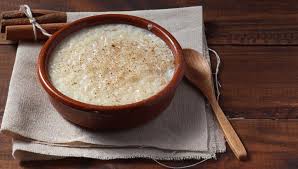

A Sunday, strolling on the Cantabrian coast, I stopped in Lorca, at the warm Café des Sports. The atmosphere was simple, friendly ... And above all, a sweet scent floated in the air. Intrigued, I approached the counter, and there, I saw it: a rice with milk, golden, creamy, terribly enticing. I fell for it. And after the first spoon, it is impossible to leave without the recipe. I share it with you here, as it was told, with all the delicacy of a Spanish Sunday.
For 6 to 8 people:
1 volume of long rice for 7 volumes of whole cow's milk.
Cut with orange and lemon zest knife and burned the skin on a flame to burst the flavors.
When you judge that your rice is cooked you can add sugar to your liking as well as cinnamon.
The little extra when the rice is cold you can bring in the mounted fresh cream. (or not)
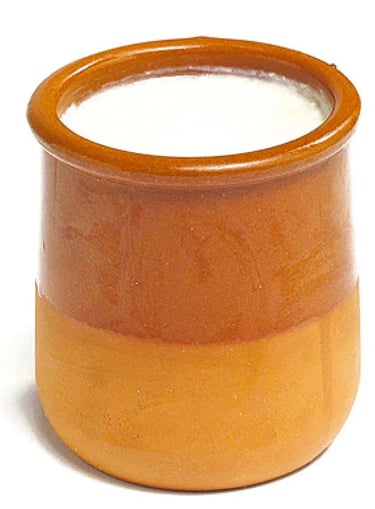

Mamia, Kallatua, Gazetatua, Cuajada probably one of the oldest desserts in the Basque Country.
The Mamia in Labourd, or Kallatua (Soule and Navarre), Gatzatua (Biscaye, and Soule), is traditionally the typical sheep curd It is close to the Gazanbera ( Basse Navarre) . Cuajada Spain .


Ingredients: for 4 people
- 1l of sheep's milk
- ½ teaspoon of reward
Preparation:
Heat the milk to 35 ° constantly stir and incorporate the rennet. Leave to rest Lh 30. Prefects honey with sugar if you want it. sweeten
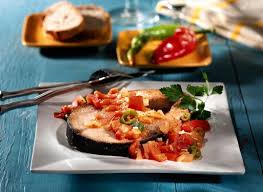

The origins of the Basquaise Red Tuna recipe are from St Jean de Luz
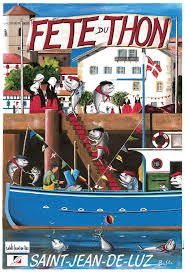

Tuna is celebrated every year in July at the port of St Jean de Luz and Ciboure.
For 6 persons
6 steaks or slices of tuna, 6 green Anglet peppers (or green peppers failing that)
4 large tomatoes, peeled and cut into large cubes, 1 large onion, chopped,
4 cloves of garlic, peeled and cut into strips, 1/3 spoon teaspoon of Espelette pepper.
Shawarma-style oyster mushrooms by Alison Arraud. The Mycelist

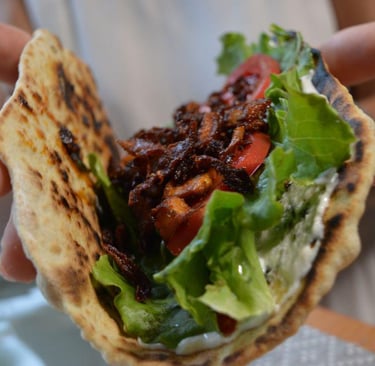
Ingredients: Recipe for 4 people
500g mixed oyster mushrooms (grey/pink/yellow)
4 tbsp. olive oil
2 cases. paprika
1 tbsp. cumin
Salt pepper
4 homemade pita or flat breads
Yogurt sauce, garlic, tahini, lemon juice, zaatar
Seasonal tomatoes and green salad leaves
Preheat the oven to 200°C fan-forced.
Cut the mushrooms into coarse strips in a salad bowl then sprinkle them with paprika and cumin. Add salt and pepper and drizzle in the oil. Stir well so that the mushrooms are well coated with spices.
Spread the oyster mushrooms on a baking sheet and bake for 15 minutes. Stir occasionally so the mushrooms brown evenly.
Meanwhile, wash a few salad leaves and cut a nice tomato into thin slices.
For the sauce, mix together the juice of ½ lemon, yogurt, sesame paste in a small bowl and crushed garlic clove.
After 15 minutes of cooking, switch the oven to grill mode for an additional 5 minutes, keeping an eye on it.
To serve, spread the bread with sauce before garnishing with the vegetables and mushrooms. Serve with seasonal raw vegetables or oven-roasted vegetables.
Taloa, a great classic of amatxi cuisine.
chrome-extension://efaidnbmnnnibpcajpcglclefindmkaj/ https://artogorria.com/wp-content/uploads/2019/11/Artogorria-recette-taloa.pdf
Line Hake cooked in the oven.
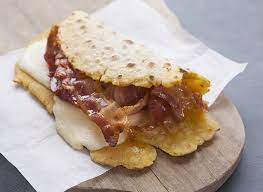

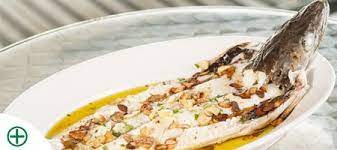

Veal Axoa
The emblematic dish of the Pays d’Espelette
Veal axoa is a traditional dish which was served on fair days in Espelette.
it is a sliced veal shoulder cut into cubes, cooked with sweet peppers, onions and Espelette pepper.
This recipe was created by Mayi Darraïdou, village restaurateur.
It has become a real specialty of Espelette.
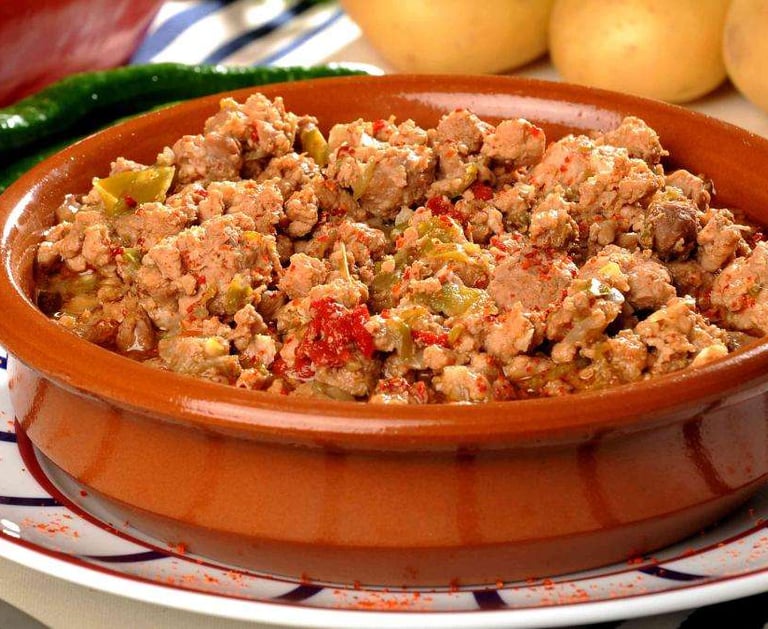

FOR 6 PEOPLE:
1 kg 200 veal shoulder, 1 onion, 6 green peppers, 1/2 red pepper, salt, Espelette red pepper, olive oil.
PREPARATION:
Cut the veal into small cubes (rather from the shoulder)
Slice the onion and cut the chillies and pepper into sticks.
Heat the oil in a saucepan and add the onion.
3 minutes later add the meat, green peppers and pepper. Season with salt and Espelette pepper. Cook for 15 minutes over high heat, covering, and stirring often so that the meat does not stick to the bottom of the pan, over the meat juices pour a good glass of white wine (Irouleguy of course)
When the juice cooking, which is cloudy at the beginning, becomes clear and transparent, cooking is finished.
Turn off the heat and keep covered for 5 minutes. Serve with garlic fried potatoes. We prefer with good fries.
The ideal place to eat a great Axoa is the Hotel Euskadi in Espelette , where it all began!!
Basquaise chicken from Segida farm in Ainhoa
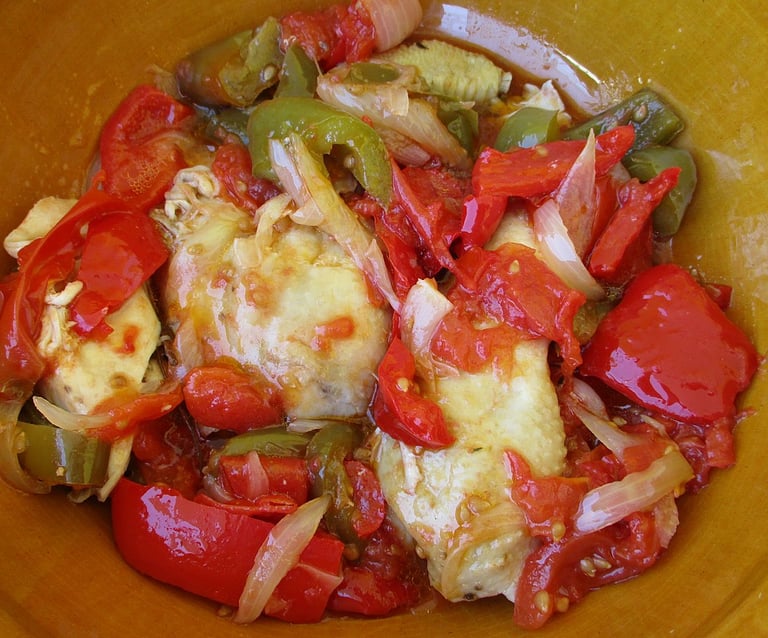

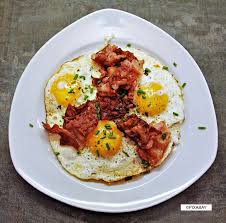

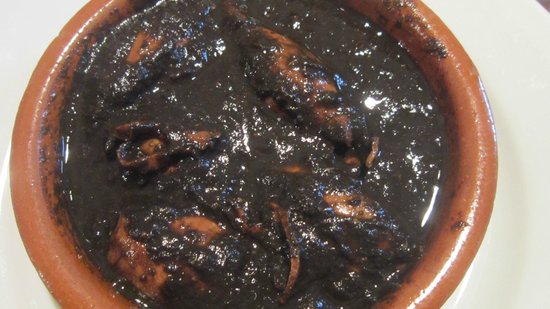

Xingar eta Arroltzia the National dish in the Basque Country, Antxondoa Farm
Xipirons in ink, a signature dish of St Jean de Luz. An address at Pablo’s !!
A cultural heritage
We have as many recipes as Maison “Etxea” in the Basque Country, each one better than the other. you can learn the basics of Basque Gateau by going to the Basque Gateau Museum in Sare for a workshop, as can the children!!!
https://www.legateaubasque.com/la-recette-du-gateau-basque-traditionnel/


